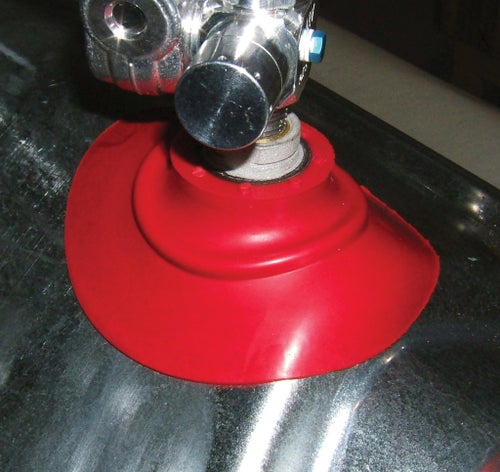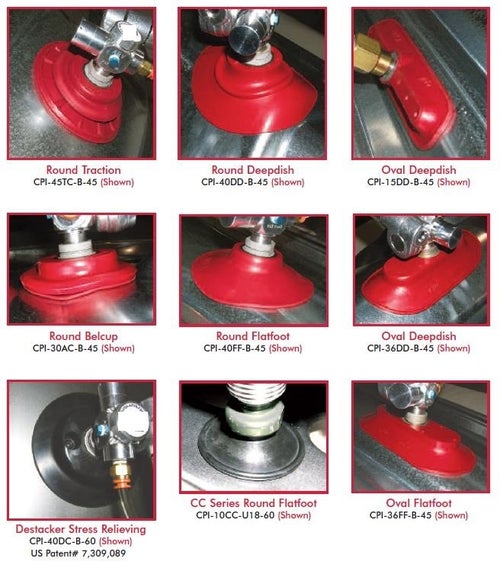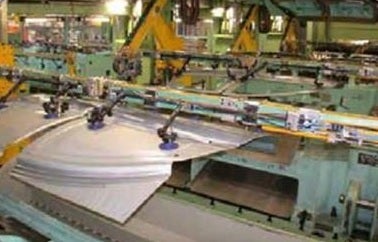How Object Characteristics Affect Vacuum Cup Selection
With vacuum cups at the business end of critical pick-and-place and workholding applications within automation systems, a truly successful operation can only be attained if the right vacuum cup is chosen for the specific job. And the proper vacuum cup can only be selected after due consideration of the physical characteristics of the objects to be handled.

Material Type
Material types generally fall into one of two categories: porous or non-porous. Porous materials, including cardboard, wood and Styrofoam, require the vacuum cup to work harder in order to create an effective seal. This generally requires higher vacuum flow, but not necessarily high-level vacuum generation in order to be lifted. Non-porous materials – steel, aluminum, hard plastic, etc. – can be sealed more easily, which means they require a lower vacuum flow to be picked up effectively.
Surface Type
Surface types also fall into two categories: dry or oily. Most objects to be lifted are dry, but there are classes of plastics that may have a fine oil on the surface. There are also examples of sheet metals that are treated with a rust-inhibitor before undergoing a stamping process that can leave an oily sheen on the surface.
Surface Contour
Again, there are two general categories of contours: flat objects or ones with curves or rounded edges. Flat objects can be handled by vacuum cups with stiffer durometers, while rounded objects need cups that are more flexible. There are also instances where an object may have too many curves or undulations, which means that a vacuum cup may not be able to be used to lift it. Also, objects that have too many closely spaced holes are not compatible with vacuum cups.

Object Weight
Weight is also a very important variable to consider. A sheet-metal hood for a car has a nice flat surface that is easy to grip, but something that large can come out of balance when it is moved, which increases the risk of it being dropped. In this case, rather than relying on one vacuum cup, four or more vacuum cups will help balance the load, making the transfer process more secure.

Special Considerations
Specialized applications like injection molding and hot forming have their own operational considerations that must be taken into account when selecting a vacuum cup. Injection molding requires the removal of hot plastic objects from a die. In this case, there is the possibility that the vacuum cup will leave a slight indentation, imprint or deformation on the newly molded object, which can cause it to not meet its required standards for look or feel. In these applications, silicone vacuum cups can be used. Also, a hot-form steel-stamping process can require the lifting and placing of steel sheets with temperatures in excess of 480ºF (250ºC). While some standard vacuum cups can tolerate these excessive temperatures, it is best to consult with the vacuum-cup manufacturer to determine if a special high-temperature vacuum cup should be used.
Contact our experts to share your application goals and technical specifications today!
